CPM 20CV is a unique tool steel manufactured using crucible metallurgy. It is a martensitic stainless steel with a high content of vanadium carbides for exceptional wear resistance. The steel contains the highest amount of chromium of all high vanadium stainless steels available today.
The chromium-rich matrix provides exceptional corrosion resistance. CPM 20CV is an excellent steel for plastic injection molding screw feeders, cylinder liners, screw tips and mold cavities, especially for plastic resins containing abrasive fillers.
The CPM process results in a finer, more uniform distribution of carbide, which imparts improved strength and grindability to high-alloy steels. The CPM process also facilitates the development of higher alloy grades that can be produced by conventional steelmaking.
CPM 20CV steel is produced by Crucible Industries (USA). Recently, the alloy and its analogues (for example, M390) have been gaining popularity in serial and author's knives. And quite deservedly so - this steel combines high cutting edge durability (with a hardness of HRC 62-63, approximately one and a half times better than CPM S30V at 61-62) with good corrosion resistance and decent mechanics.
CPM20CV guarantees high impact toughness and can withstand heavy work in extreme conditions. In addition, the steel is characterized by an aggressive cut. Among the disadvantages - it is somewhat more difficult to process, for a good result during heat treatment, cryotreatment is required.
The steel is considered a good choice for high-end fixed blade folding knives. Good performance and edge retention. According to reviews, chipping of carbides may occur when sharpening below 30 degrees. Burr is minimal and easy to remove.
Other names or analogs: DuraTech 20CV, 20CV, M390, CTS-204P.
Application
- High-performance, wear-resistant special cutlery;
- Plastic casting and extrusion feed screws and dies;
- Pelletizer knives;
- Pelletizing equipment;
- Wear-resistant components for food and chemical processing.
Steel comparison chart
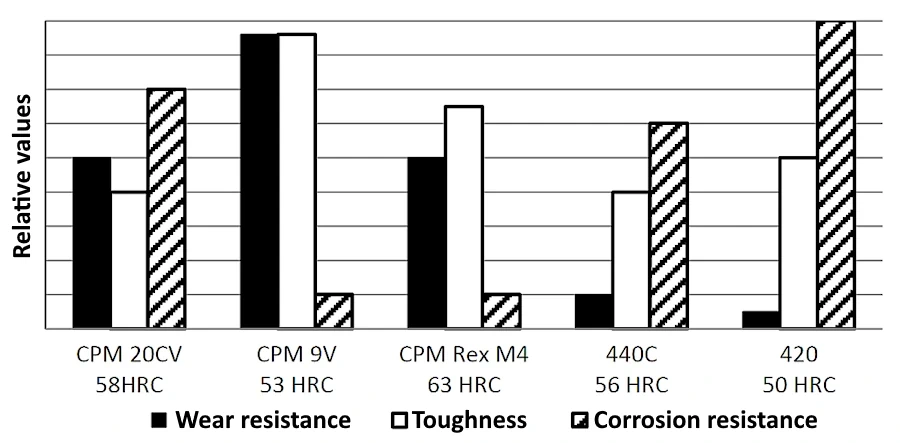
Chemical composition
Chemical composition of steel grade CPM 20CV | |||||||
| C | Cr | Mo | V | W | Mn | Si | Fe |
| 1,9 | 20,0 | 1,0 | 4,0 | 0,6 | 0,3 | 0,3 | Other |
Physical properties
- Density: 7616 kg/m3;
- Modulus of elasticity: 214 GPa;
- Machinability: 35-40% 1% carbon steel;
- Coefficient of thermal expansion:
20 - 100 °C: 10.9X10-6 mm/mm/°C;
20 - 200 °C: 11.2X10-6 mm/mm/°C;
20 - 300 °C: 11.8X10-6 mm/mm/°C;
20 - 400 °C: 12.1X10-6 mm/mm/°C;
20 - 500 °C: 12.3X10-6 mm/mm/°C;
Edge retention
| Grade | % |
| CPM 20CV | 180 |
| 14-2-4CrMoV | 145 |
| 14-4CrMo | 120 |
| 440C | 100 |
The CATRA (Cutlery & Allied Trade Research Association) testing machine measures the total amount of silicon-impregnated cards cut in a series of passes along the blade. This is considered a relative measure of edge retention and wear resistance.
Thermal treatments
- Annealing: annealing should be done after hot working and before re-hardening. Heat at a rate of not more than 222 °C per hour to 1016 °C to 1038 °C and hold at temperature for 1 hour per inch (25.4 mm) of maximum thickness for at least 2 hours. Then cool slowly in the furnace at a rate of not more than 15 °C per hour to 538 °C. Continue cooling to ambient temperature in the furnace or in air. The resulting hardness should be approximately 30 HRC or lower.
Hardening
- Preheat: heat to 760 - 788 °C. Equalize.
- Austenitizing (high temperature): rapid heating from preheat to a temperature in the range of 1071 - 1177 °C. A lower austenitizing temperature maximizes impact toughness. A higher austenitizing temperature maximizes wear resistance and corrosion resistance. Hold at austenitizing temperature for 30 minutes.
- Quench: compressed gas or warm oil. For compressed gas, the furnace should have a minimum quenching pressure of 4 bar. A quenching rate of about 222 °C per minute to a temperature below 538 °C is critical to obtaining the desired properties. For oil, quench to blackness to about 482 °C, then air cool to 66 - 51 °C.
- Cryogenic treatment: for austenitizing at 1149 °C or higher, cryogenic treatment after quenching to 66 - 51 °C is recommended to reduce retained austenite. Cool to -73 °C, remove from coolant, and allow part to warm to ambient temperature in still air.
- Temper: temper is performed immediately after quenching or after quenching and cryogenic treatment. Typical temperature range is 204 - 427 °C. Hold at temperature for 1 hour per inch (25.4 mm) of thickness for a minimum of 2 hours, then air cool to ambient temperature.
Typical service hardness is 56-59 HRC, although higher hardness values may be used to improve wear resistance. Tempering between 427 - 583 °C will reduce corrosion resistance and impact toughness.
Heat treat response
- For furnace or salt bath hardening:
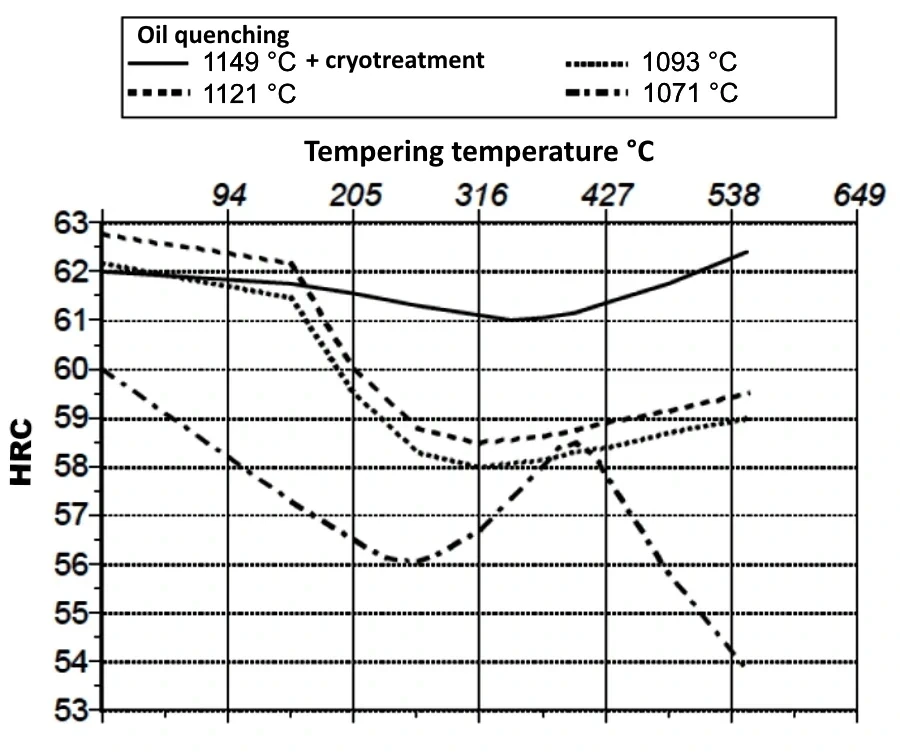
- For vacuum furnace hardening:
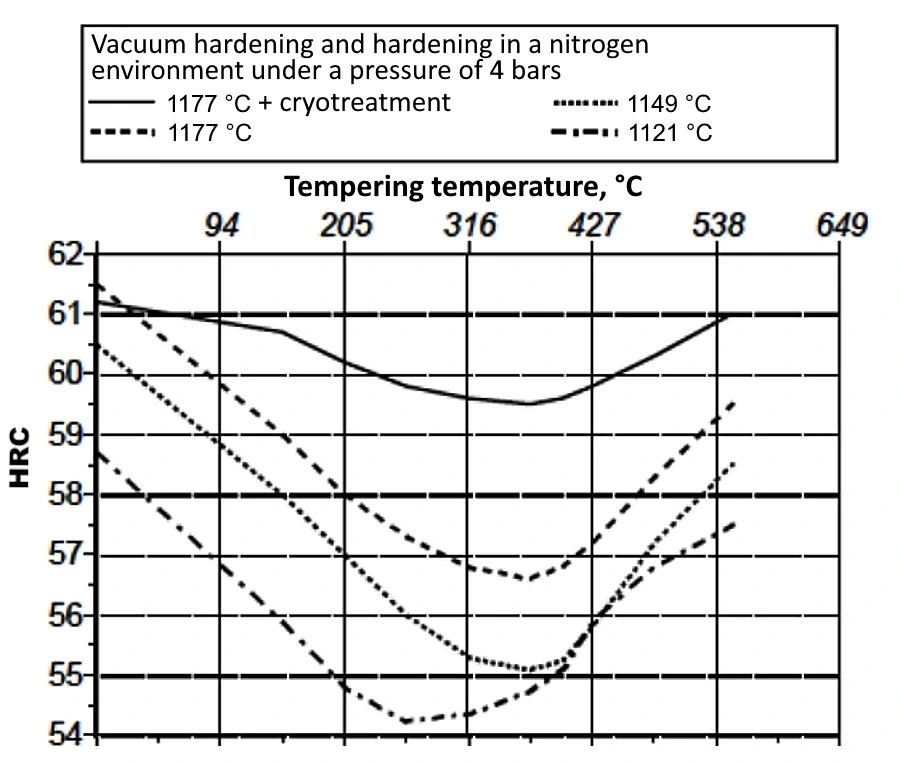
CPM 20CV - powder stainless steel with a high content of chromium and vanadium is characterized by excellent corrosion resistance. Currently, it is one of the "golden" standard stainless steels for premium segment knives.

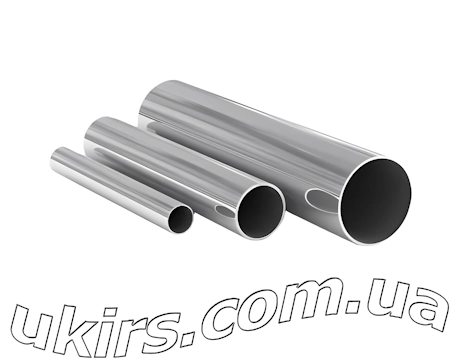 Stainless Steel Round Pipe
Stainless Steel Round Pipe 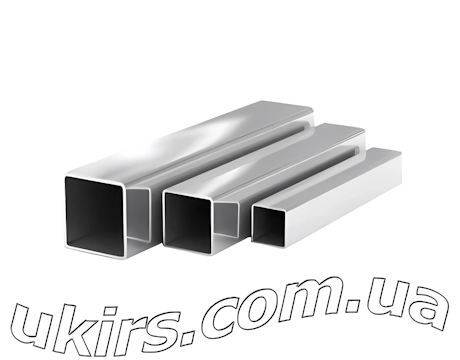 Stainless Steel Square Pipe
Stainless Steel Square Pipe 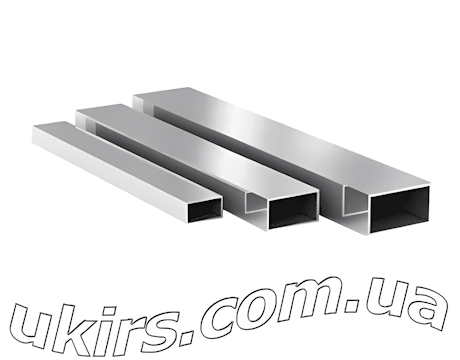 Stainless Steel Rectangular Pipe
Stainless Steel Rectangular Pipe 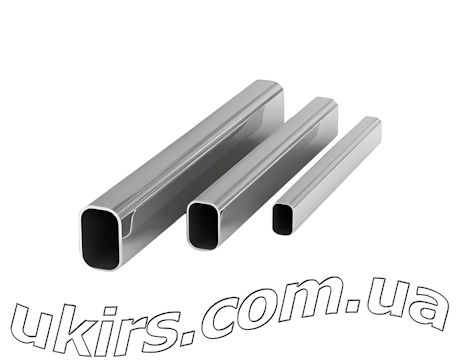 Stainless Steel Oval Pipe
Stainless Steel Oval Pipe 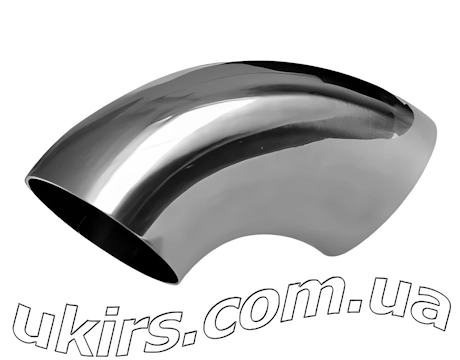 Stainless Steel Elbow
Stainless Steel Elbow 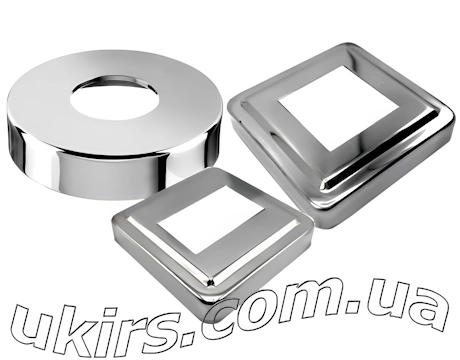 Stainless Steel Decorative Cover
Stainless Steel Decorative Cover 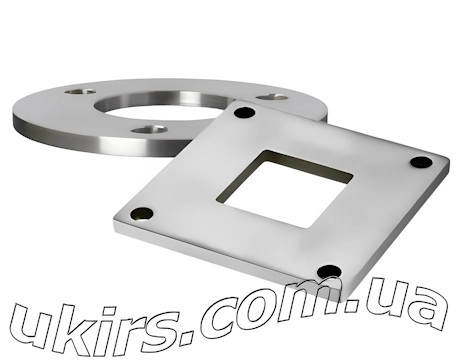 Stainless Steel Flange
Stainless Steel Flange 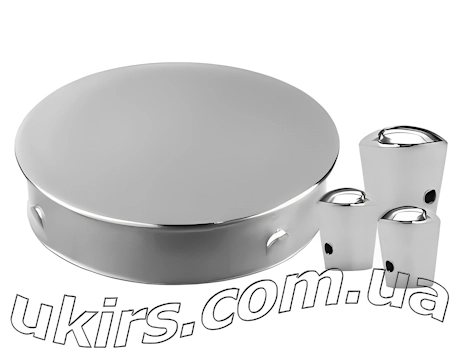 Stainless Steel Plug / Cap
Stainless Steel Plug / Cap 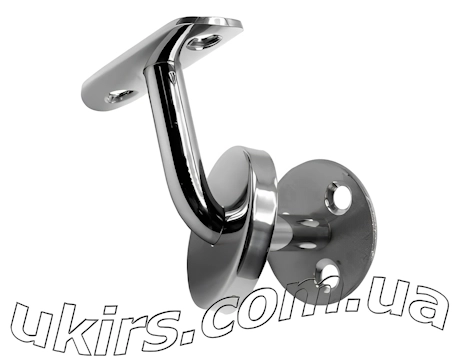 Stainless Steel Handrail Holder
Stainless Steel Handrail Holder